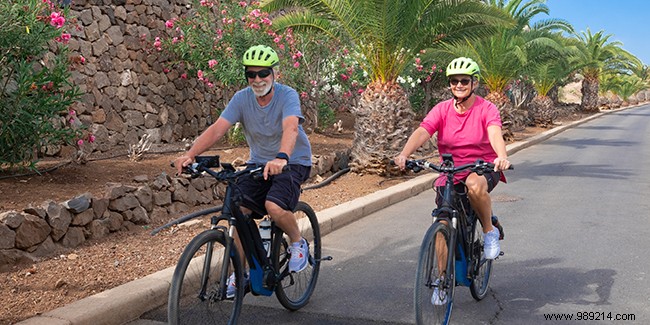
If seniors are turning to electric bikes, it is because their physical fitness is declining. However, to get the most pleasure from this practice, it is essential to respect the safety rules and to choose the right electric bike. Many criteria are added compared to a classic bike and today the market offers a wide variety of models. It is therefore not easy to find it. That's why this article lists all the criteria you need to weigh to choose the best electric bike for you.
If you are sporty and want to use the electric bike mainly to move on rocky paths and trails, you can definitely consider a mountain bike. If, on the other hand, you mainly want to evolve in town and on the road, then you will have to focus on models dedicated to these uses, more suitable than an electric scooter. Finally, if you are one of those who do not like to choose, you will find bikes seeking a compromise between these two uses:these are all-terrain electric bikes (VTC).
In the case of city e-bikes, frame design is extremely important. Indeed, there are cities where the traffic density is such that more or less urgent braking situations are frequent. And statistics show that seniors injure themselves a lot when getting on or off the bike. Indeed, with age, the body stiffens and mobility decreases. The contact of both feet on the ground can therefore be a determining factor for a senior.
Also, it is essential to try the bike to test your ease, but also all the possible settings, the comfort of your posture and the ergonomics of the controls. You may pay particular attention to the pressure exerted on the wrists, and the efforts made by the back, neck and shoulders. Well designed and adapted to your morphology, an electric bike must provide a real feeling of ease .
After the contact of the feet on the ground, the weight of the bike is another important criterion. Electrically assisted bicycles are necessarily heavier than conventional bicycles. It takes an average of 5 kg more, which is far from negligible. Some bikes thus reach 27 kg. Even if the motor compensates for some effort, you are not immune to having to maneuver the bike without assistance.
However, do not focus on this criterion alone. As a senior, you might be tempted to favor the lighter models. Intuitively, you tell yourself that this will make transportation and travel easier. However, the lighter the bike, the greater the risk of underperformance is tall. You will not find the same levels of assistance on bikes that are too light. It is indeed a set of criteria that you must take into account to find the weight / performance compromise that suits you, depending on your budget of course.
More than the weight itself, it is the positioning of the center of gravity of the bike that you must take into account. It is estimated that the bike has a good behavior when the center of gravity is low. Mid- to high-end bikes often include the motor in the crankset and integrate the battery into the frame. Urban electric bikes integrate the battery under the luggage rack.
The battery is of course a fundamental criterion for choosing an electric bike. Here are the features you should keep in mind for your selection:
It is important to follow the manufacturer's recommendations indicated in the booklet supplied with the electric bike upon purchase. Don't forget to top up every month the battery, even if the e-bike has not been used.
The behavior of the motor characterizes the electric bicycle according to the EN15194 standard. The engine must:
You will find electric bikes capable of traveling up to 45 km/h. But the law that applies is different:these electric bikes must be registered, insured and the user must wear a helmet.
Torque power is expressed in Newton meters (Nm). The offer is very wide:depending on the model, it can be between 15 and 85 Nm. Obviously, the higher the motor torque, the more the electric bike will be able to face significant gradients. It is not mandatory to go for excessive performance if your ambitions remain modest and your daily environment is flat.
The location of the motor has an influence on driving. Only the trial will allow you to appreciate agility of the bike you have selected.
All electric bikes are equipped with a speed sensor or “speed sensor”. There are two types of sensors:the rotation sensor and the pedal force sensor. The choice will be made when testing the bike, depending on your feelings. The rotation sensor is undoubtedly the one with the most drawbacks because the assistance is not immediately perceptible when starting and it can be unnatural because the assistance does not adapt to the pedaling power but to the spin. For its part, the force sensor requires more effort to benefit from the assistance.
All the items we have listed allow you to make choices from home. You will compare performance and maybe even reviews found on different websites or in catalogs. You will thus arrive at a choice of two or three models. You will then contact the shops to find out if they offer them and if you can try them. Because nothing beats a try! Selection by criteria is one thing, but nothing beats listening to your sensations to make your final choice.